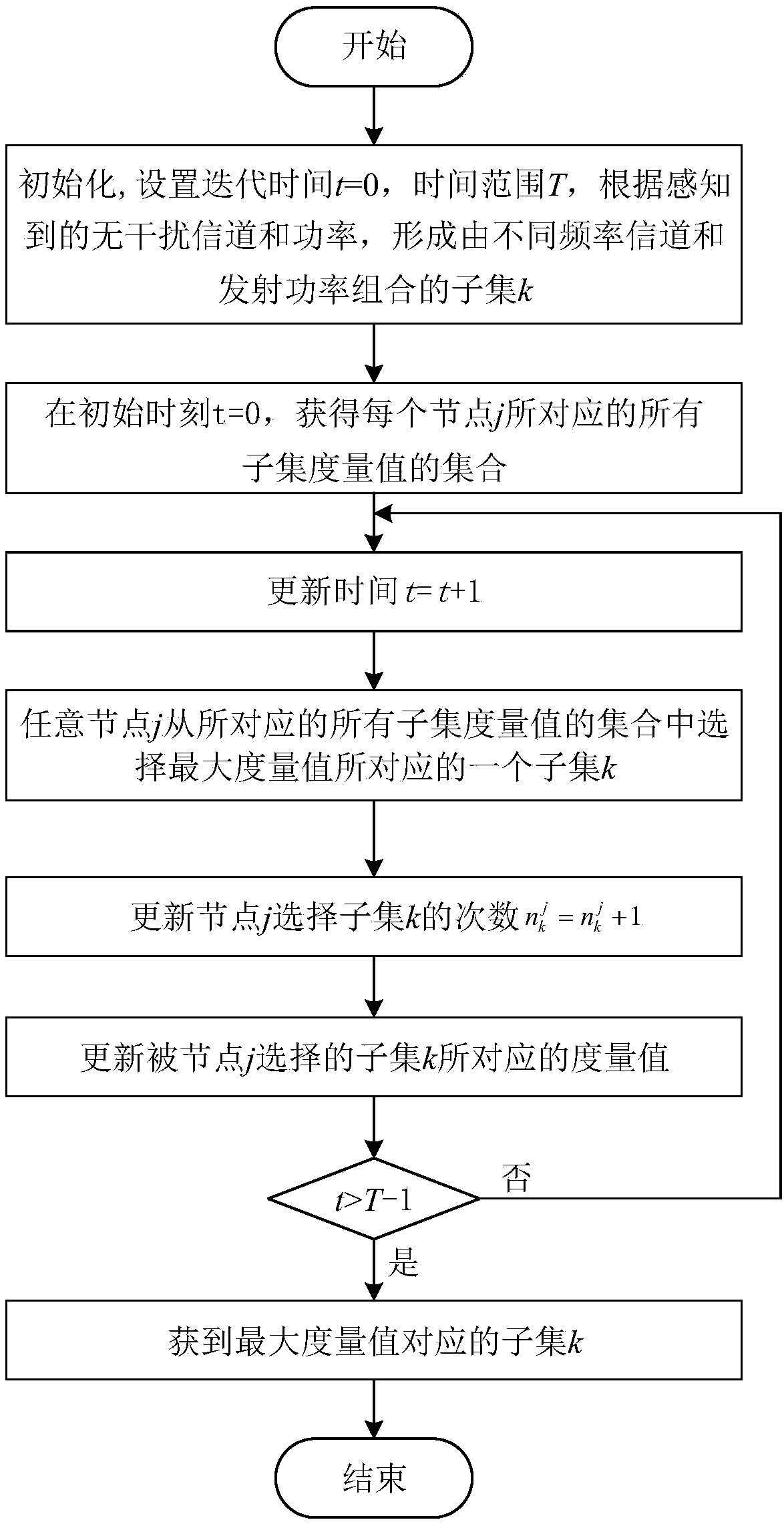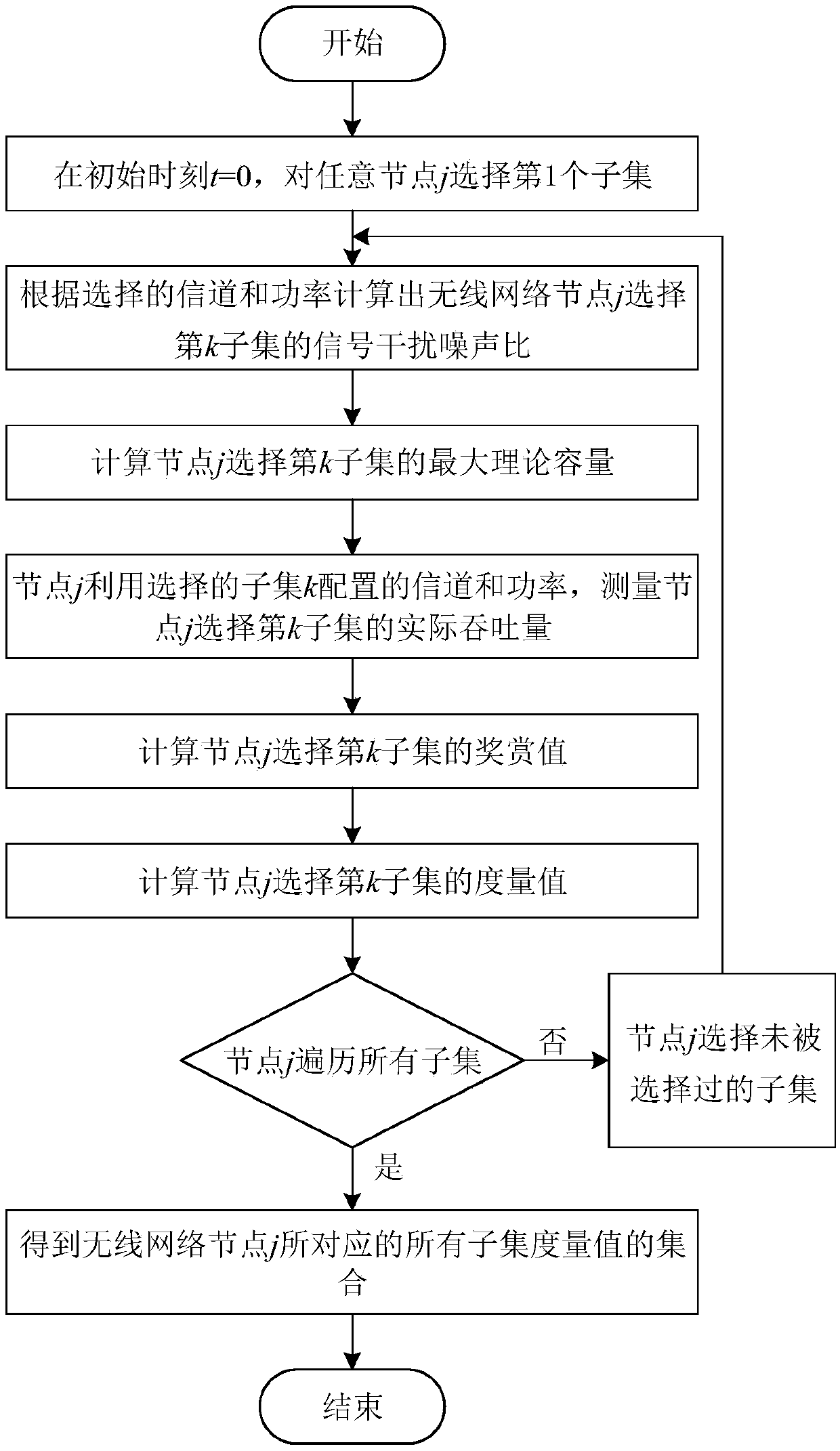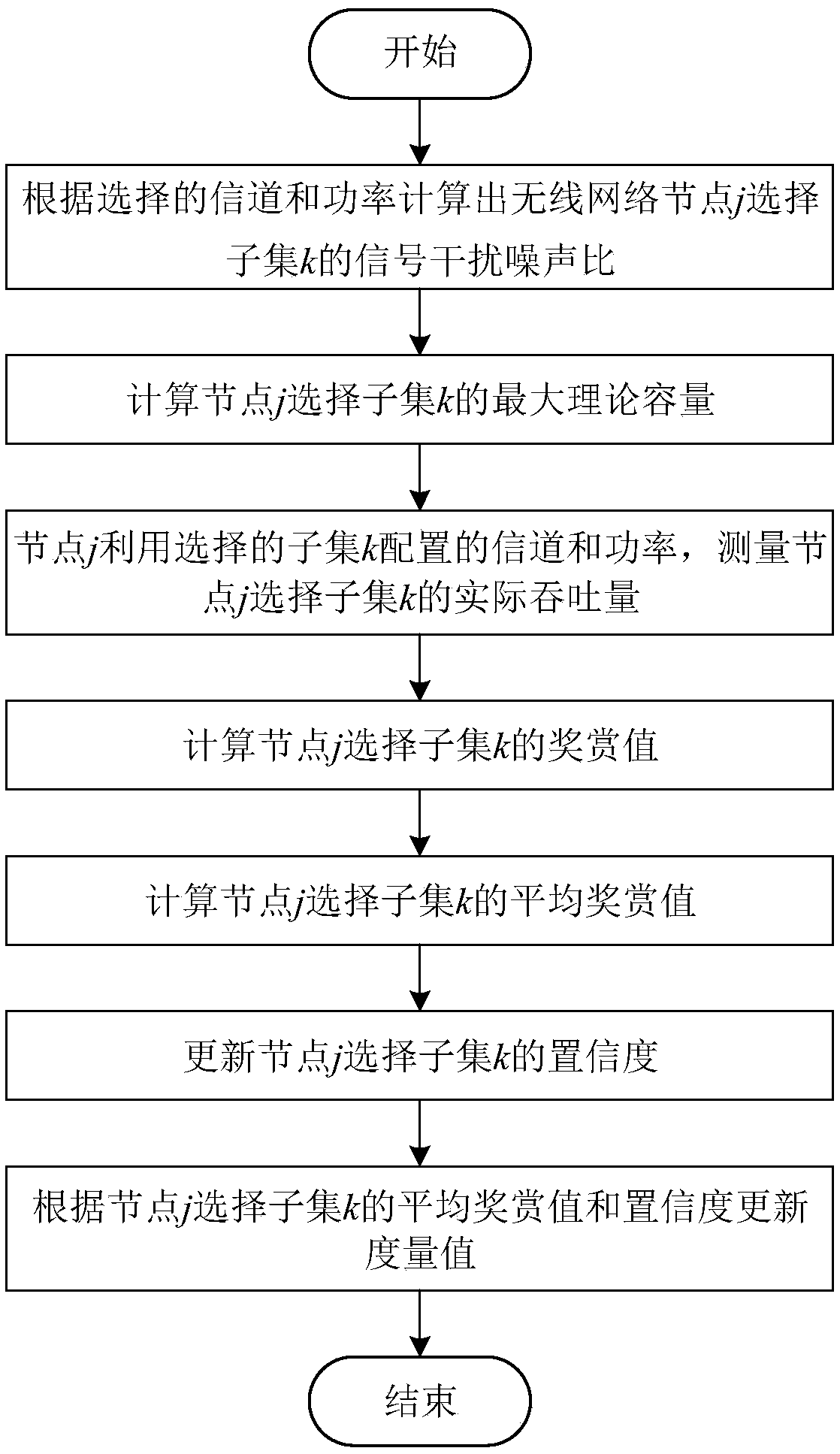Cognition anti-interference communication method based on reinforcement learning algorithm
A communication method and reinforcement learning technology, applied in wireless communication, transmission monitoring, network traffic/resource management, etc., can solve problems such as difficulty in learning effective anti-interference strategies, and achieve the effect of maximizing throughput
- Summary
- Abstract
- Description
- Claims
- Application Information
AI Technical Summary
Problems solved by technology
Method used
Image
Examples
Embodiment Construction
[0030] Step (1): Set iteration time t = 0, time range T = 20000, according to perceived interference-free channels {1, 2} and power {4, 8, 12, 16}, form different frequency channels and transmit power combined subset {f u ,p v}, where f u ∈{1,2},f v ∈{4,8,12,16}, the index of each subset is marked as k∈{1,...,8}, all subsets constitute the set {{1,4},...,{2,16 }};
[0031] Step (2): At the initial time t=0, for any node j, traverse all subsets, calculate the metric value of node j for each subset, and obtain the set of metric values of all subsets corresponding to wireless network node j
[0032] As an example, computing the metric for the k=1th subset of nodes j=1 The specific steps are as follows:
[0033] Step (2.1), first calculate the signal-to-interference-noise ratio of the k=1 subset selected by the wireless network node j=1 according to the selected channel and power Among them, node j=1 selects the received power of the k=1th subset as P j,k -249.4150dBm...
PUM
 Login to View More
Login to View More Abstract
Description
Claims
Application Information
 Login to View More
Login to View More - R&D
- Intellectual Property
- Life Sciences
- Materials
- Tech Scout
- Unparalleled Data Quality
- Higher Quality Content
- 60% Fewer Hallucinations
Browse by: Latest US Patents, China's latest patents, Technical Efficacy Thesaurus, Application Domain, Technology Topic, Popular Technical Reports.
© 2025 PatSnap. All rights reserved.Legal|Privacy policy|Modern Slavery Act Transparency Statement|Sitemap|About US| Contact US: help@patsnap.com



